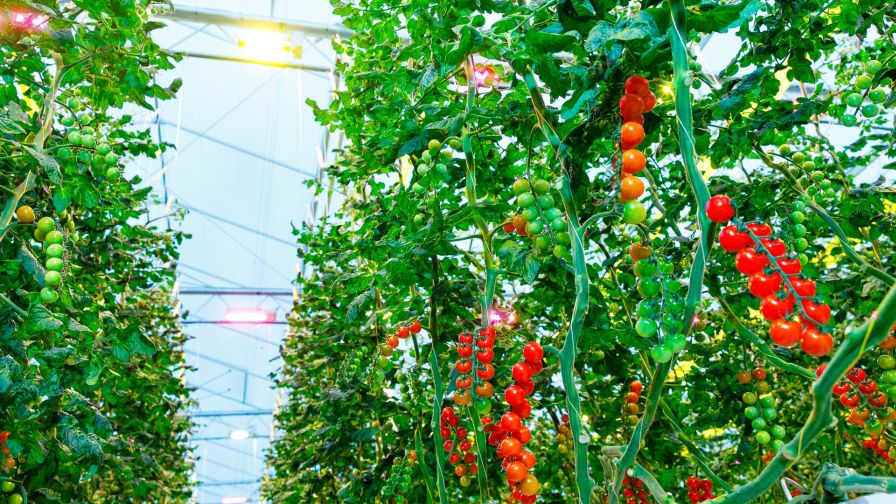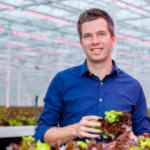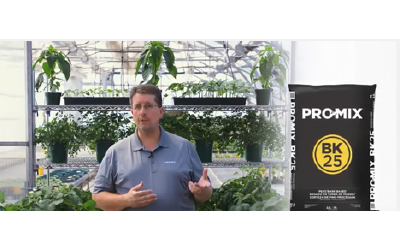How You Can Shift From Optimal Growth to Optimal Energy Use With LEDs

Photo: Bram Saeys; Signify LED Verlichting; Tomaten kweker Den Berk Delice Merksplas Belgie
These are crazy times in horticulture. Growers are dealing with high energy prices and the impact on their lighting strategy. Last winter, many tomato growers in Western Europe switched off their HPS lights as a reaction to the rapidly rising energy prices. Some entrepreneurs made an accelerated transition to hybrid or full LED, and LEDs became dominant for growers with hybrid installations.
We’ve seen LEDs quickly become more popular because they are more economical and offer flexibility. This means that the position of HPS has changed dramatically. Two years ago, growers still thought of HPS as essential for tomato cultivation, but by now they only turn the lights on at night. That is when electricity is cheapest and HPS has most effect on the development of the crop.
From Maximum to Efficient
Influenced by the energy market, the approach to lighting is changing. Focus on maximum production is being exchanged for the most efficient use of your available energy. The great thing about LEDs, which use about half the amount of energy, is that they bring this new lighting strategy within reach. This makes it possible to start thinking in terms of “as much gram tomato/kWh as possible” instead of “as much production and/or the highest light efficiency as possible.” A considerable difference, which also affects other aspects of cultivation.
Flexibility
The transition to LED lighting has gained momentum, and this development will continue. But as a grower, you should be aware that when you tweak the lighting, this will also have consequences for the rest of your cultivation. Growing with LED influences the climate in the greenhouse, for instance. Less HPS means less radiation heat, and therefore a different heat division and moisture balance in the greenhouse. To overcome that, you can choose to use the growth tube as primary heating, over the pipe rail. The growth tube has a more direct effect on the plant temperature and growth speed of the fruits, causing the shift in emphasis for many tomato companies.
Furthermore, some LED lights have the advantage that they’re dimmable and don’t radiate heat. This separates heat from light and makes more lighting hours possible with LED during times of the year when the temperatures rise.
Dimming the lights with a Philips GrowWise Control System, for example, gives growers the flexibility to quickly react to changes outside, but also to fluctuating energy prices. This means you can switch on- and off in stages and give a better dosage of light compared to HPS.
Integration of Lighting and Climate Control
Growers will further align their lighting and climate strategy with LED. To fully benefit from the advantages, two energy screens combined with dehumidification systems are used more frequently. That is the only way to take full advantage of the light output and save a maximum amount of energy at the same time, without compromising on the greenhouse climate. There is more focus on dehumidification. In the meantime, you should keep an eye on the plant temperature and crop development.
Searching for the Limits
During the winter, growers have looked for the limits and have discovered which minimum temperatures and light sums are still acceptable. Some dropped below the bottom line and saw the crop growth and ripening slow down too much. The bandwidth differs for every crop, but in general you can say that with less than 90 Mol/m2/wk, combined with too low temperatures, growth will slow down considerably. The crop needs a certain light sum to stay healthy, and moreover, asks a certain amount of light for the fruiting period. The amount of energy should be just right for the plant load and stem density of the crop.
Equal Buildup of Plant Load and Light Sum
Due to the mild weather during the previous winter, growing with mostly LED has gone well in most cases. However, should it be a cold winter, there is a risk that the crop will grow too vegetatively during the first months of lit cultivation. A good and consistent crop buildup requires good coordination between the light sum and plant load. More light is not necessarily better in that case.
No grower wants a crop development that is too vegetative, because that means the fruits will remain too small and the crop grows too slowly, leading to quality issues. It is advised to use growth and photosynthesis models for a good buildup, giving you the possibility to monitor and steer the crop.
Balance Between Artificial and Natural Light
Besides the buildup of the light sums, the transition to natural light in spring should also happen with caution. Even with good daily light sums, the use of light can be inadequate in several cases. Integrating a gradual transition in the balance between the sum of artificial light and natural light is key.
Growers should keep in mind that their crop will look differently under full LED than they are used to with HPS. It can take you by surprise if you don’t know the difference. The plants are more compact and darker green and look a bit weaker at first. But the crop is strong enough.
Evaporation and Fertilizers
Don’t forget to also keep an eye on the reduced evaporation. That is a side effect of full LED lighting: it causes a reduced water absorption and with that the uptake of fertilizers. You can anticipate this by steering for a higher EC-value.
It continues to be a matter of finding the balance. Given the current high energy prices, you will again have to look for the limits as a grower. But you should remain cautious. Because when lowering the light intensity, there is a risk that during the winter months too little light will penetrate to the bottom parts of the plant. That is why it’s important to keep the structure of the crop open. That means you should pick enough leaves so that the lower leaves can also absorb enough light.









